/cloudfront-eu-central-1.images.arcpublishing.com/prisa/6OF7W3JFXBGN3EY7D6KYCIWLIY.jpg)
Four decades by Ava Gardner’s side: love, movies and rebellion
‘Living with Miss G.’ is Mearene Jordan’s memoir of her time as the maid, assistant and confidant of the American actress, who starred in films such as ‘Mogambo’ and ‘The Night of the Iguana’
During a career spanning nearly half a century, Ava Gardner loved, fought, cried, laughed, suffered, had fun and, obviously, also acted. She was a star. Lauded by Hollywood as “the most beautiful animal in the world,” she battled against the norms of her time, and did what she could to improve the weak scripts that – by contract – she had to follow. She even fled to Europe to escape Hollywood’s conventionality.
Always by her side was Mearene Jordan, who began as her maid, became her assistant, and, finally, ended up as Gardner’s best friend and confidant. Jordan saw and heard Gardner’s secrets, keeping them for decades. That is, of course, until 2012, when, at the age of 90, she published Living with Miss G. via the Ava Gardner Museum.
Jordan decided to write down everything she experienced alongside her friend, so that readers could truly understand Gardner – who she knew as Miss G. – and discover that, beyond the love affairs and wild times, there was a woman who dreamed of being free.
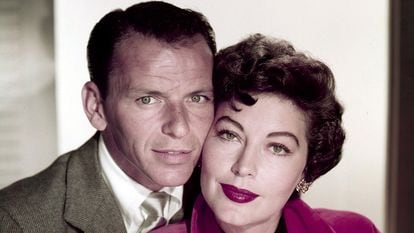
Frank Sinatra and Ava Gardner in 1953.
Mearene Jordan – Rene to her friends – was born in a humble part of St. Louis, Missouri. Eleven months later, Ava Gardner was born in Grabtown, a small agricultural community about nine miles south of Smithfield, North Carolina, where the museum that now honors her is located.
Aside from the notable racial difference – Jordan was Black, and Gardner was white – both women grew up in large families with parents who struggled to pay the bills. Jordan left her home at the age of 16, moving to Chicago to earn her living however possible: babysitting children, hanging up jackets in a nightclub’s cloakroom, and sewing in a factory. She eventually moved to Los Angeles, where it was easier to find work.
One of Jordan’s sisters, Tressie, was a domestic worker at the home of Artie Shaw and Ava Gardner, at the time that the actress was married to the bandleader. When Tressie sensed that the marriage was crumbling, she recommended her sister to take care of Gardner in her new bachelorette apartment.
In 1946, Gardner had been in Hollywood for five years. Her divorce from Shaw was her second. At age 24, she already had two ex-husbands, and had played dozens of small roles that had failed to materialize into a big break. While waiting for an opportunity, she earned a meager salary.
The author describes how Gardner looked during her job interview: “Slender as a bamboo pole, but with visible curves, hair caught up in a red bandana, oval face, cleft in chin, green eyes sparkling, and a wonderful, warm smile.” Jordan accepted the job offer and spent many nights sleeping on the sofa bed in the living room of the small Los Angeles apartment.
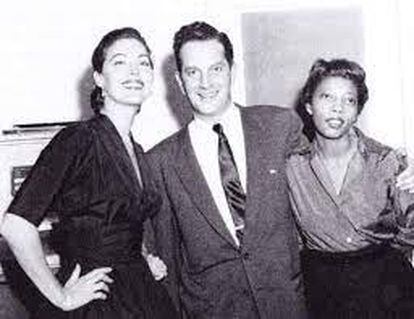
Gardner’s career improved thanks to the 1946 premiere of The Killers, although she had to contend with an unfair contract that bound her to MGM Studios. Jordan describes Gardner’s acting talent as being far superior to what was shown on screen. She also emphasizes Gardner’s frankness in business, her poor choice of male company, and her ferocity when Jordan accompanied her into hotels and restaurants in the segregated Jim Crow South. “Ava was my bodyguard,” she writes.
The author is a privileged witness of Gardner’s ascent to fame; of her friendship with Gregory Peck and Charles Laughton, both of whom saw the actress’s potential and encouraged her; of her work in One Touch of Venus or The Great Sinner, until, by the 1950s, she finally achieved stardom.
“Gregory Peck also recognized Miss G’s immense potential and tried to encourage her to believe in her talent and work at it. She never did. She lacked that ambition and lacked that confidence. She made her mark because she was always playing herself, her natural self,” her friend writes in the book.
In Living with Miss G., Jordan records the love affairs of her boss. She confirms that the greatest love of Gardner’s life was Frank Sinatra. The actress fought to revive his singing career when, at the beginning of the 1950s, nobody would hire him. While they were only married from 1951 to 1957 (they began dating in 1949), Sinatra always checked up on her until the end of her life, as a friend.
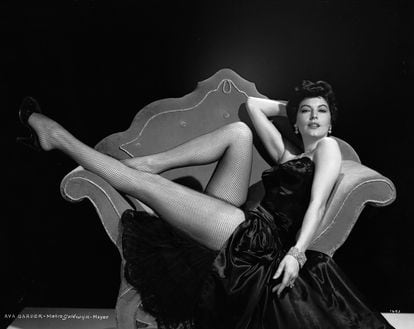
Ava Gardner, pictured in 1952.VIRGIL APGER (GETTY IMAGES)
However, neither Sinatra nor Gardner are beatified on the pages: both are described as quarrelsome, drunk, stormy, jealous… adjectives that easily corrode a relationship. The two times that Gardner became pregnant, she opted to abort. She never discussed this with Sinatra: he already had three children from a previous marriage. “Did Miss G want to add to that total? I don’t think Miss G ever thought that through completely, and we never discussed it,” writes Jordan.
In the memoir, Jordan paints magnate Howard Hughes – who was sexually obsessed with Gardner – as a weirdo. The actor George C. Scott appears as a man of the worst kind – who drunkenly beat her. Jordan speaks highly of the Spaniard Luis Miguel Dominguín, but less so of Mario Cabré, another bullfighter who crossed paths with Gardner. She laughs at the scores of Gardner’s co-stars who bragged about sleeping with her, when those dalliances never took place.
Gardner in Spain
In 1950, Jordan and Gardner arrived in Spain for the filming of Pandora and the Flying Dutchman. The movie was set along the Costa Brava, and prefaced the streak that made Gardner a star: Show Boat, The Snows of Kilimanjaro and Mogambo, the last of which earned Gardner her sole Oscar nomination. Eventually, during the filming of The Barefoot Contessa, the actress and her maid moved to Madrid. Jordan remembers their time in Spain with affection, describing the endless parties, the horror felt at watching the bullfights, their unpleasant experience living next door to exiled Argentine dictator Juan Domingo Perón and Gardner’s friendship with writer Ernest Hemingway.
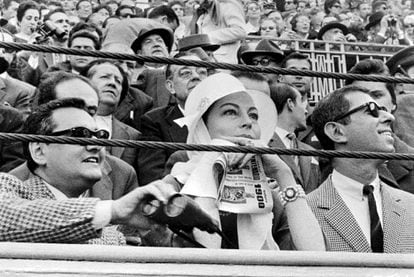
Of course, the memoir talks a lot about cinema. They are reflections on certain scripts, descriptions about how directors such as John Huston, George Cukor and Stanley Kramer worked, and anecdotes from the sets of films such as The Naked Maja, On the Beach, 55 Days at Peking and Seven Days in May. Overall, Jordan spends a lot of time discussing the filming of The Night of the Iguana, “the happiest film that Miss G and I ever worked on, and arguably her best-ever movie role.” Of the 37 chapters in the book, five of them focus on this production, which was a rollercoaster of emotions onscreen and off. After wrapping the shoot in Mexico, Gardner moved to London, where, at the age of 44, her career began to slow down.
There were certainly moments of anger between the two women: in one fallout, Jordan moved from Madrid to Paris, and began working as Gene Kelly’s assistant. She returned to Gardner in the end, but more as a friend: the role of the maid was taken over by a Colombian woman named Carmen, who stayed in Gardner’s service until the end of her days in London.
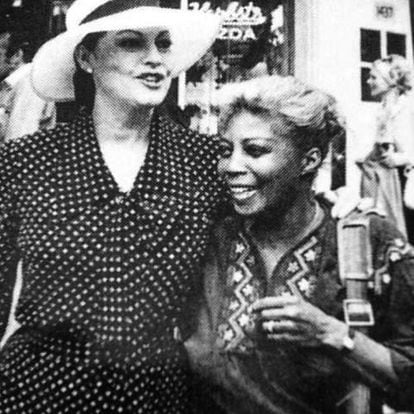
Jordan studied to become a beautician. She married, got divorced, returned to London to be with Gardner, and finally, in 1975, she opened a beauty salon in Sacramento, where she would live until her passing in 2014.
After wrapping a miniseries titled The Long Hot Summer (1985), Gardner suffered a stroke from which she never fully recovered, no matter how much she exercised (she had always loved working out, especially swimming, and during productions she would eat frugally, avoid alcohol, and sleep a lot). In the summer of 1989, Gardner and Jordan spent their last months together preparing the actress’s autobiography. In London, Gardner confessed – and Jordan transcribed this confession into the last chapter of the book, which is titled Last of the Laughter – that she regretted not having become closer friends with Winston Churchill, one of her heroes.
Half a year later, on January 25, 1990, at the age of 67, Ava Gardner succumbed to pneumonia and passed away.


No comments:
Post a Comment